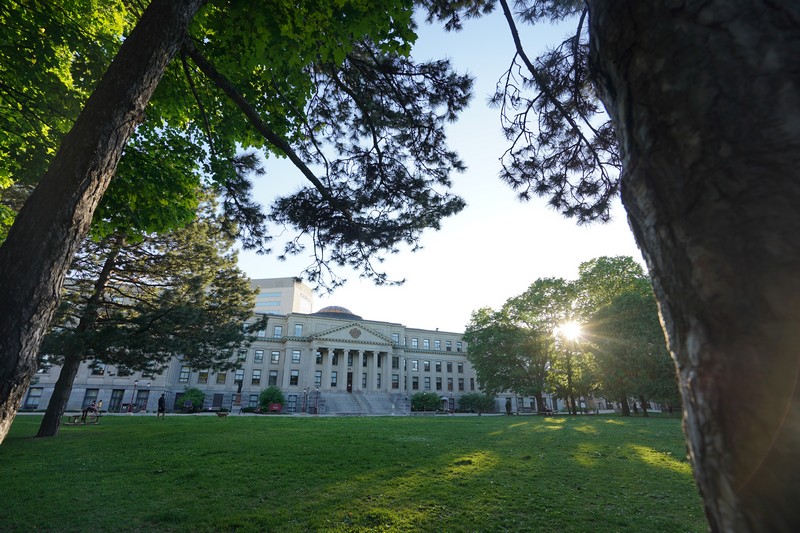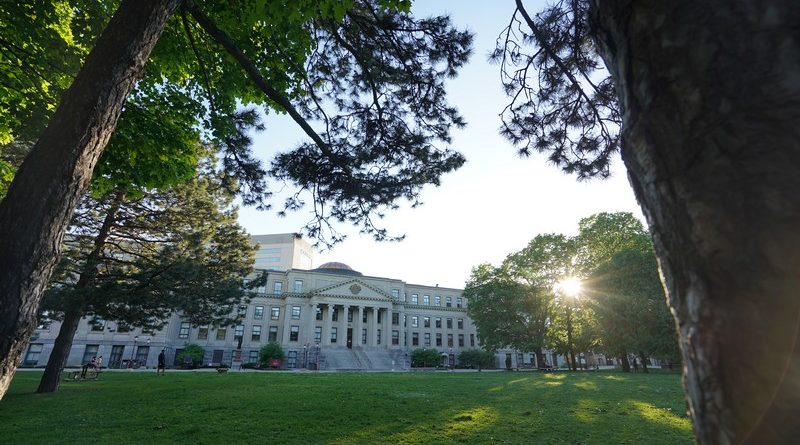An urban Arcadia
Samuel Close
Ottawa is a green city, even by Canadian standards, with some one-third of the city being under direct tree cover. The benefits that these pockets of nature bring to the urban environment are well documented, from cooling to air quality and mental health improvements.
Of the impressive 50-some tree varieties found in Sandy Hill, the most common are native to Canada, which is an adequate reflection of the city as a whole, though in fact many of the species here were brought over with early European settlers to the area. While the majority of trees in the Ottawa Valley and Ontario in general are evergreens, numerous species of deciduous or broad-leaved trees can also be found, such as the ubiquitous sugar maple, our national symbol, as well as the familiar paper-white bark of the common birch. Many other species of popular hardwood trees from the last century and the one before are still standing, as grand oak, elm and beech were in fashion as the city grew rapidly in the mid to late 1800s.
The many conifers in the Ottawa Valley are a result of natural selection, as the trees that use waxy, water-insulating needles instead of broad leaves can perform photosynthesis all through the winter and so have more energy and further promoting their spread. They are also notable for their softwood bark and ability to grow in more rugged soil and climate conditions, further propagating their spread. Pines are able to make up the majority of the Ottawa Valley’s tree population because of its rocky, silty soil and long winters. They typically live longer and grow to impressive heights here in their natural environment.

Photo Hilary Duff
Some prominent examples of hardwood species can be found in Strathcona Park, where rows of century-old willows stand tall and provide a barrier of sorts from the strong winds blowing in from the open river. Just across the water in Vanier’s Riverain Park, a similar situation exists with towering willows growing along the river’s banks providing welcoming shade and shelter. Younger softwood spruce and cedar have much potential for growth and to shelter residents from the noise of the nearby Trans-Canada highway.
A few blocks inland one can find Sandy Hill (soon to be Annie Pootoogook) and St. Germain parks. They are lined along their fringes with a variety of trees, mostly deciduous shade providers such as maple, locust, and willow. The two parks with their facilities are fan favourites for summer and winter sports alike.
Just up the hill Tabaret lawn is another great spot to take in some local nature. It is home to several fine old broadleaf varieties which offer shade under which students can read and dog walkers can rest on a sunny day. Bright colours are aplenty here in the fall season.
The nearby Rideau Canal is also perfect for a stroll under its tall and slender maple trees. The western side specifically has many a bench and is well covered by greenery for most of the downtown portion of the canal. The most famous stretch just upstream from the Ottawa River was planted in the 1950’s as part of the Greber plan modernization effort.
The effort to expand public parkland can be seen in the City of Ottawa Urban Intensification plan, which I encourage everyone to read and provide feedback on, as our green spaces are a common source of good that matters not only to us but future generations as well!
—with notes from Marilyn Whitaker

Photo Hilary Duff
A useful chart to identify trees in this area (Nutt & Stevens Ltd., Leicester, England.):
18. Close chart
